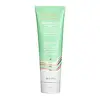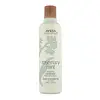What's inside
What's inside
 Key Ingredients
Key Ingredients

 Benefits
Benefits

 Concerns
Concerns

 Ingredients Side-by-side
Ingredients Side-by-side

Water
Skin ConditioningCetrimonium Chloride
AntimicrobialCetyl Alcohol
EmollientSorbitol
HumectantPanthenol
Skin ConditioningCaprylic/Capric Triglyceride
MaskingHydrolyzed Soy Protein
HumectantStearyl Alcohol
EmollientHelianthus Annuus Seed Oil
EmollientSimmondsia Chinensis Seed Oil
EmollientRosmarinus Officinalis Leaf Extract
AntimicrobialSalix Alba Bark Extract
AstringentTocopherol
AntioxidantRosmarinus Officinalis Leaf Oil
MaskingTilia Cordata Flower Extract
Skin ConditioningGlycerin
HumectantSambucus Nigra Fruit Extract
AstringentVitis Vinifera Seed Extract
AntimicrobialMelilotus Officinalis Extract
AstringentMenthol
MaskingSpirulina Maxima Extract
SmoothingMentha Piperita Oil
MaskingStearamidopropyl Dimethylamine
EmulsifyingPolysorbate 60
EmulsifyingBehentrimonium Methosulfate
Cetearyl Alcohol
EmollientLecithin
EmollientPotassium Sorbate
PreservativeSodium Benzoate
MaskingEthylhexylglycerin
Skin ConditioningParfum
MaskingWater, Cetrimonium Chloride, Cetyl Alcohol, Sorbitol, Panthenol, Caprylic/Capric Triglyceride, Hydrolyzed Soy Protein, Stearyl Alcohol, Helianthus Annuus Seed Oil, Simmondsia Chinensis Seed Oil, Rosmarinus Officinalis Leaf Extract, Salix Alba Bark Extract, Tocopherol, Rosmarinus Officinalis Leaf Oil, Tilia Cordata Flower Extract, Glycerin, Sambucus Nigra Fruit Extract, Vitis Vinifera Seed Extract, Melilotus Officinalis Extract, Menthol, Spirulina Maxima Extract, Mentha Piperita Oil, Stearamidopropyl Dimethylamine, Polysorbate 60, Behentrimonium Methosulfate, Cetearyl Alcohol, Lecithin, Potassium Sorbate, Sodium Benzoate, Ethylhexylglycerin, Parfum
Water
Skin ConditioningCetyl Alcohol
EmollientGlyceryl Stearate
EmollientStearamidopropyl Dimethylamine
EmulsifyingRosmarinus Officinalis Leaf Water
MaskingMentha Piperita Oil
MaskingVinegar
Simmondsia Chinensis Seed Oil
EmollientWheat Amino Acids
Skin ConditioningGlycine Soja Oil
EmollientTocopherol
AntioxidantLactic Acid
BufferingParfum
MaskingCetrimonium Chloride
AntimicrobialPotassium Sorbate
PreservativePhenoxyethanol
PreservativeIngredients Explained
These ingredients are found in both products.
Ingredients higher up in an ingredient list are typically present in a larger amount.
This ingredient is a preservative, antimicrobial, and emulsifier. It is often used in cosmetics for its ability to cleanse, condition, and reduce static.
Cetrimonium chloride is a quaternary ammonium salt, meaning it has a water-soluble structure.
Cetyl Alcohol is a fatty alcohol. Fatty Alcohols are most often used as an emollient or to thicken a product.
Its main roles are:
Though it has "alcohol" in the name, it is not related to denatured alcohol or ethyl alcohol.
The FDA allows products labeled "alcohol-free" to have fatty alcohols.
Learn more about Cetyl AlcoholMentha Piperita Oil is the volatile oil obtained from the whole plant of the Peppermint plant.
It can be used to add a fresh scent to products.
Peppermint oil may cause skin sensitivity and redness due to its menthol content. Menthol also has a cooling effect (like your toothpaste).
Learn more about Mentha Piperita OilParfum is a catch-all term for an ingredient or more that is used to give a scent to products.
Also called "fragrance", this ingredient can be a blend of hundreds of chemicals or plant oils. This means every product with "fragrance" or "parfum" in the ingredients list is a different mixture.
For instance, Habanolide is a proprietary trade name for a specific aroma chemical. When used as a fragrance ingredient in cosmetics, most aroma chemicals fall under the broad labeling category of “FRAGRANCE” or “PARFUM” according to EU and US regulations.
The term 'parfum' or 'fragrance' is not regulated in many countries. In many cases, it is up to the brand to define this term.
For instance, many brands choose to label themselves as "fragrance-free" because they are not using synthetic fragrances. However, their products may still contain ingredients such as essential oils that are considered a fragrance by INCI standards.
One example is Calendula flower extract. Calendula is an essential oil that still imparts a scent or 'fragrance'.
Depending on the blend, the ingredients in the mixture can cause allergies and sensitivities on the skin. Some ingredients that are known EU allergens include linalool and citronellol.
Parfum can also be used to mask or cover an unpleasant scent.
The bottom line is: not all fragrances/parfum/ingredients are created equally. If you are worried about fragrances, we recommend taking a closer look at an ingredient. And of course, we always recommend speaking with a professional.
Learn more about ParfumPotassium Sorbate is a preservative used to prevent yeast and mold in products. It is commonly found in both cosmetic and food products.
This ingredient comes from potassium salt derived from sorbic acid. Sorbic acid is a natural antibiotic and effective against fungus.
Both potassium sorbate and sorbic acid can be found in baked goods, cheeses, dried meats, dried fruit, ice cream, pickles, wine, yogurt, and more.
You'll often find this ingredient used with other preservatives.
Learn more about Potassium SorbateThis oil comes from the seeds of the desert shrub called Jojoba. It is more commonly known as jojoba oil, a non-comedogenic oil.
Jojoba oil does not contain fragrance and has many fatty-acids, making it a great soothing ingredient.
It also contains Vitamin E, a great moisturizing ingredient. Vitamin E is also an antioxidant and protects your skin against oxidative damage.
This ingredient humectant properties, meaning it helps draw moisture from the air. This helps keep your skin hydrated.
While jojoba has antibacterial properties, it is only able to kill some strains of bacteria.
Studies also show it helps in wound healing. In fact, Indigenous cultures have used jojoba as a moisturizer and to help treat burns for centuries.
Fun fact: Jojoba oil similar to natural human skin sebum, so it has a great effect on dry skin. It is also promising with helping to regulate sebum production.
Due to its fatty acid content, Jojoba oil may not be fungal acne safe. We recommend speaking with a professional if you have any concerns.
Learn more about Simmondsia Chinensis Seed OilWe don't have a description for Stearamidopropyl Dimethylamine yet.
Tocopherol (also known as Vitamin E) is a common antioxidant used to help protect the skin from free-radicals and strengthen the skin barrier. It's also fat soluble - this means our skin is great at absorbing it.
Vitamin E also helps keep your natural skin lipids healthy. Your lipid skin barrier naturally consists of lipids, ceramides, and fatty acids. Vitamin E offers extra protection for your skin’s lipid barrier, keeping your skin healthy and nourished.
Another benefit is a bit of UV protection. Vitamin E helps reduce the damage caused by UVB rays. (It should not replace your sunscreen). Combining it with Vitamin C can decrease sunburned cells and hyperpigmentation after UV exposure.
You might have noticed Vitamin E + C often paired together. This is because it is great at stabilizing Vitamin C. Using the two together helps increase the effectiveness of both ingredients.
There are often claims that Vitamin E can reduce/prevent scarring, but these claims haven't been confirmed by scientific research.
Learn more about TocopherolWater. It's the most common cosmetic ingredient of all. You'll usually see it at the top of ingredient lists, meaning that it makes up the largest part of the product.
So why is it so popular? Water most often acts as a solvent - this means that it helps dissolve other ingredients into the formulation.
You'll also recognize water as that liquid we all need to stay alive. If you see this, drink a glass of water. Stay hydrated!
Learn more about Water